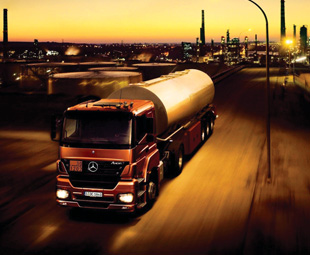Illuminating the switch to aluminium

The benefits of the automotive industry moving towards aluminium in the manufacturing of products has been highly publicised in recent years. But what exactly would this switch mean for vehicle manufacturers? And what costs are involved? FOCUS investigates.
The 2015 Ford F-150 was introduced to the market earlier this year and it certainly managed to get tongues in the automotive industry wagging again, because of its all-aluminium body.
According to the Aluminium Transport Group (ATG), vehicles made of aluminium are durable, lighter, stronger and more fuel efficient. They also deliver high safety and driving performance standards. These are some of the reasons why the transport industry has been incorporating more aluminium into products for many years now.
In 1996, Scania introduced the fully aluminium OmniCity bus to the market. It boasted a weight saving of 600 kg, which meant increased passenger capacity and lower environmental impact per passenger kilometre.
The aluminium profiles were screwed or bolted together, instead of being welded, which allowed for easy assembly using hand tools. For Scania, easy assembly meant shorter lead times in production.
Since then Scania has continued to make buses with all-aluminium bodies on aluminium structures, in order to help speed up the transition to more sustainable passenger transport. In recent years, more bus manufacturers have been teaming up with aluminium producers to make all-aluminium buses.
With all this progress in the direction of all aluminium vehicles and the advantages of switching to aluminium widely known, why has the automotive industry been so hesitant to actually make the big switch once and for all? The answer, according to a study conducted by Innovation in Europe Research and Results, is partly because of the high cost of aluminium compared to steel. Although it may be lighter, aluminium is three times more expensive than steel.
The other concern manufacturers have is that they would have to change their long-established, mass-production methods, which have been perfected for steel, in favour of new, perhaps more expensive, methods. For example, aluminium, which isn’t magnetised, can’t be pulled by huge magnets through auto plants and instead must be pulled by vacuum pumps.
“It’s not as simple as just switching from one material to another,” Ron Krupitzer, vice president of the Steel Market Development Institute, an industry-funded research group, told the Wall Street Journal.
Training technicians to work with aluminium and new equipment is another factor that manufacturers and auto-body repair specialists have taken into account. And it’s not so much the availability of training programmes as the cost that is the real issue. Training programmes can cost up to R500 000.
According to The Aluminum Association, comprehensive programmes are being put in place that address aluminium’s different characteristics and the development and implementation of repair instructions, for specific aluminium vehicles, has been led by manufacturers. “The Inter-Industry Conference on Auto Repair and representatives from the auto insurance and repair equipment supply industries, have worked side-by-side with experts from the aluminium industry to develop training guides for correct repair of aluminium panels.”
Steel industry officials say aluminium is difficult to weld and putting together aluminium vehicles with adhesives and rivets is a cumbersome process compared with welding advanced high-strength steel pieces together. However, auto-body specialists believe working with aluminium is no more difficult than working with steel; it’s just different.
According to OFS Panel Beaters, situated in East End, Bloemfontein, the need for proper aluminium expertise, when it comes to repairs, is extremely high and very scarce in South Africa. The company says it constantly invests in the training of its specialised aluminium repair team, as the best equipment has no relevance if staff don’t have the necessary training and expertise.
“The latest training for the aluminium team included advanced structural repair and welding courses in Germany. We also have our own aluminium welding training facility to train the next generation of specialised technicians,” the company notes.
This dedication to the switch from steel to aluminium has won OFS Panel Beaters special aluminium repair approval from major vehicle manufacturers including Volvo and Volkswagen.
After all is said and done, the use of aluminium in vehicle manufacturing is expected to double by the year 2025. According to the ATG, full-bodied aluminium and aluminium-intensive vehicles are already common in high-end luxury and performance cars – now those successes are speeding the shift to aluminium, and away from other materials, in the manufacturing of high-volume passenger vehicles.
“And as heavy truck makers build upgraded freight haulers to carry bigger payloads, while saving fuel and cutting tailpipe emissions, aluminium use in commercial vehicles will continue to rise too.”
The ATG explains that today the average class-eight commercial truck uses 454 kg of aluminium. This is expected to increase to 1 497 kg as heavy-duty vehicle producers pursue improvements in overall vehicle efficiency and reduced operating costs.
Whether or not the benefits of using aluminium outweigh the costs of switching to it, the debate will continue for a little while longer. In the meantime, as restrictive fuel-efficiency laws continue to increase, vehicle manufacturers will be forced to lighten the weight of their vehicles – with aluminium proving to be the preferred alternative.
Published by
Focus on Transport
focusmagsa




